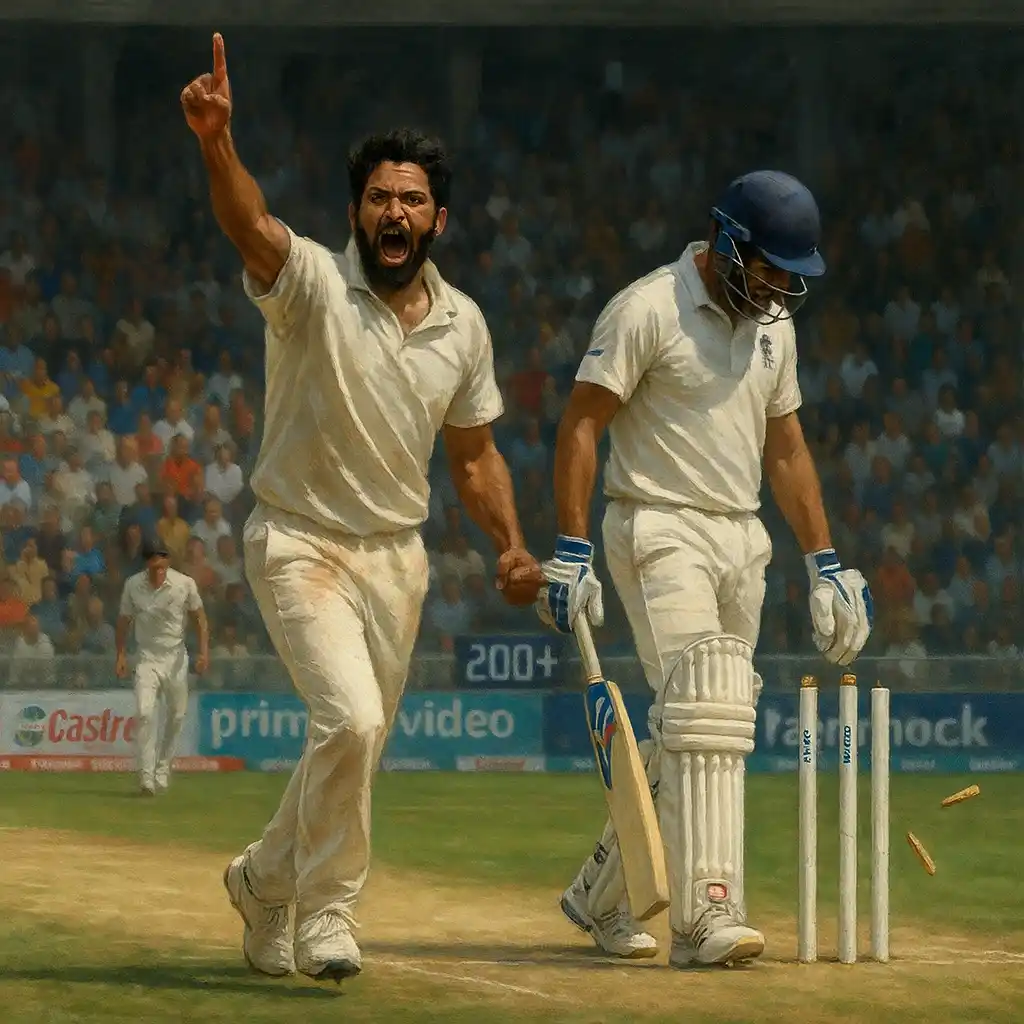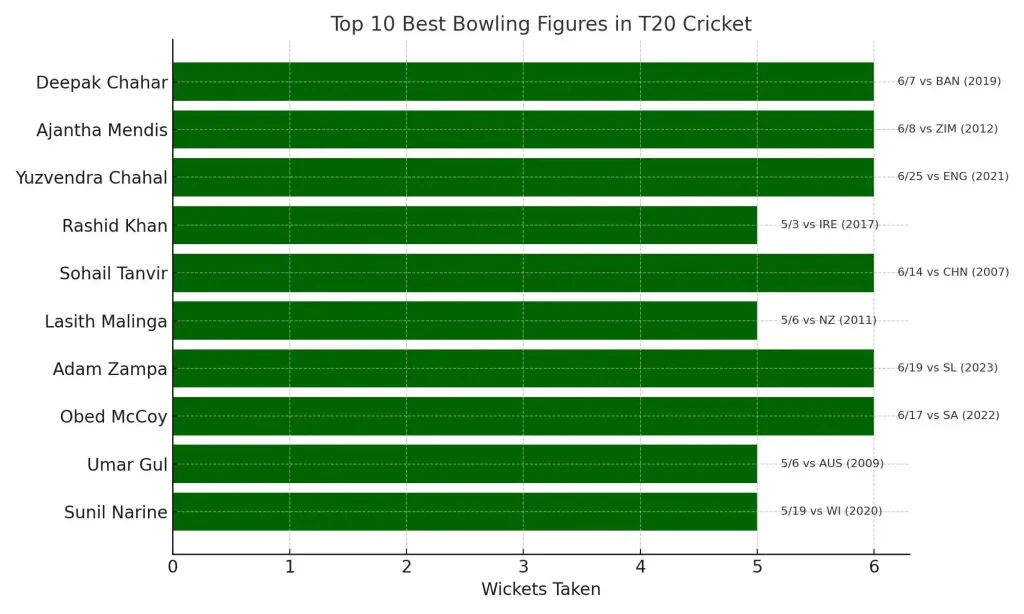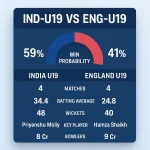
T20 cricket is unforgiving. Batters swing from ball one, sixes are normalised, and dot balls feel like gold dust. So when a bowler not only survives but dominates, it’s not just remarkable — it borders on miraculous. That’s why the phrase best T20 bowling figures shouldn’t just refer to numbers on a scorecard. It should summon images: slow walk-ups, steely eyes, calculated fields, and then — absolute chaos from the other end.
The raw stats are easy to find. You’ve probably seen them. Six wickets, sometimes seven. Runs conceded barely scraping double digits. But what really makes a T20 bowling performance legendary is when it shifts the entire match narrative. Let’s dive into some of the best T20 bowling figures in cricket history — and more importantly, the moments and conditions that gave them weight.
Top 10 Best T20 Bowling Figures (as of 2025)
| Rank | Bowler | Figures | Team | Opponent | Year |
| 1 | Deepak Chahar | 6/7 | India | Bangladesh | 2019 |
| 2 | Yuzvendra Chahal | 6/25 | India | England | 2017 |
| 3 | Rangana Herath | 5/3 | Sri Lanka | New Zealand | 2014 |
| 4 | Ajantha Mendis | 6/8 | Sri Lanka | Zimbabwe | 2012 |
| 5 | Obed McCoy | 6/17 | West Indies | India | 2022 |
| 6 | Peter Aho | 6/5 | Nigeria | Sierra Leone | 2021 |
| 7 | Lasith Malinga | 5/6 | Sri Lanka | New Zealand | 2019 |
| 8 | Umar Gul | 5/6 | Pakistan | New Zealand | 2009 |
| 9 | Shakib Al Hasan | 5/10 | Bangladesh | West Indies | 2023 |
| 10 | Wanindu Hasaranga | 5/13 | Sri Lanka | Zimbabwe | 2023 |
Context Is Everything: Why Chahar’s Spell Tops the List
Let’s start with Deepak Chahar. His 6 for 7 wasn’t just the best T20 bowling figures for India — it came in a match where Bangladesh was threatening to chase down a tricky total. Chahar came on when momentum was swinging, and what followed was art. Swing at pace, variation in length, and unflinching discipline. The ball to remove Mohammad Mithun — full, late swing, crashing the stumps — set the tone. Three wickets in his final over wrapped the game. But more than that, it shut down belief.
People remember hat-tricks. What they forget is pressure preceding them. And Chahar’s spell was soaked in it. That’s why it remains not just the most economical six-for in T20Is, but perhaps the most disruptive.
Spin and the Short Format: Not Just Containment
Many of the best T20 bowling figures belong to spinners. That might seem strange in a format designed for hitting, but it makes sense. Batsmen premeditate. Spinners counter that with deception. Ajantha Mendis didn’t just beat Zimbabwe in 2012 — he made them look confused. Herath in 2014 spun a web so tight that New Zealand forgot how to score. The point? Great spells are often psychological. A batter missing two in a row becomes hesitant. The field closes in. And then the collapse begins.
Take Yuzvendra Chahal’s 6 for 25 against England. He wasn’t just turning the ball. He was reading minds. Bowling slower than expected, daring the batsman to slog — and then winning the dare. His performance ended England’s chase not with one magic delivery, but with six smart ones.
Beyond Big Teams: Hidden Gems from Associate Nations
Not all legendary spells happen under the biggest lights. Peter Aho’s 6/5 for Nigeria may not have had millions watching, but it had heart. A young team, under pressure, defending a modest total — and Aho stepping up with accuracy beyond his years. Six wickets, just five runs. It reminded fans that brilliance isn’t confined to elite teams. The ball doesn’t know your ranking.
And that’s important. The best T20 bowling figures may be found in World Cups, but just as often in qualifiers, warm-ups, or associate clashes. What matters is impact, not stadium size.
Table: Most Economical 5+ Wicket Hauls in T20 Internationals
| Bowler | Figures | Economy Rate | Opponent | Year |
| Deepak Chahar | 6/7 | 2.10 | Bangladesh | 2019 |
| Peter Aho | 6/5 | 2.00 | Sierra Leone | 2021 |
| Rangana Herath | 5/3 | 1.50 | New Zealand | 2014 |
| Lasith Malinga | 5/6 | 2.40 | New Zealand | 2019 |
| Umar Gul | 5/6 | 2.66 | New Zealand | 2009 |
What These Spells Have in Common
One thing you’ll notice across the board? Control. These aren’t bowlers running in with blind aggression. They’re chess players. Each ball sets up the next. Every over has an arc: a setup, a bluff, a kill. Even the wicket celebrations are muted — they know the job isn’t done until the tail folds.
Another thing: support. Most of these spells happen when captains trust the bowler. Let them bowl through. Keep catchers in place. Fight the instinct to go defensive. Fielding also plays a huge role. A dropped catch ruins not just a statline, but rhythm. The best spells often feature stunning grabs — running in from deep midwicket, diving at backward point, even quick stumpings off spin.
Where Fast Bowlers Fit In
It’s not just spinners, though. Umar Gul’s 5/6 was a masterclass in reverse swing. Lasith Malinga’s spell in 2019 was classic Malinga: toe-crushing yorkers, slower balls with no cue, and relentless pressure. These aren’t just feats of skill, but endurance. Maintaining pace and control over four overs in T20 is a workout — mental and physical.

Obed McCoy’s 6/17 against India in 2022 was another reminder. He mixed slower balls like a street magician, used the wide angle smartly, and never let India settle. His spell was less about brute force, more about rhythm — and that’s modern pace bowling in T20s.
The Pressure Element: What Stats Don’t Show
What’s often missed when discussing the best T20 bowling figures is pressure. Bowling first? You’re setting the tone. Bowling second? You’re defending — often thin margins. And yet, the best spells seem to rise under pressure.
Shakib Al Hasan’s 5/10 wasn’t just against any team — it was against the West Indies, one of the most aggressive lineups. He pulled their tempo apart. Dot balls felt like blows. His line didn’t waver. In a format that rewards chaos, he found stillness. That’s the core of elite T20 bowling — silence amid noise.
Can We See a 7-Wicket Haul in T20 Internationals?
It’s possible. With increasing experimentation in batting orders, lower-order collapses are more frequent. Add matchups, analytics, and captains who aren’t afraid to let in-form bowlers bowl out — and the stars could align. A 7-for? Unlikely, but not impossible. The bar’s already high. But cricket’s charm lies in breaking bars.
It might take a unique day: overcast swing, soft ball, early breakthroughs, and a captain who doesn’t overthink. But someone will do it. Maybe a teenager from Afghanistan. Maybe a veteran from Nepal. Maybe even another Indian on a pitch that grips.
Final Over Thoughts: The Spell That Lingers
Numbers alone don’t make a spell legendary. It’s the story. The arc. The timing. The stare after a dot ball. The field change before a googly. The silence after a wicket. The best T20 bowling figures, like any great performance, don’t just reflect ability. They reveal character.
So next time someone drops a “6 for 8” in a group chat, look deeper. Ask about the field. The build-up. The match state. Because behind every great T20 bowling performance is a bowler who didn’t just turn up — they turned the match.

Meet Arjun Kushaan, a passionate cricket analyst at The Cricket24x7. From street matches in his childhood to competitive college tournaments, cricket has always been a central part of Arjun’s life. With a strong background in data analysis and a natural affinity for numbers, he brings a fresh, analytical lens to the game. At The Cricket24x7, Arjun blends his deep love for cricket with his data-driven approach to deliver detailed insights and well-rounded coverage for fans of the sport.






